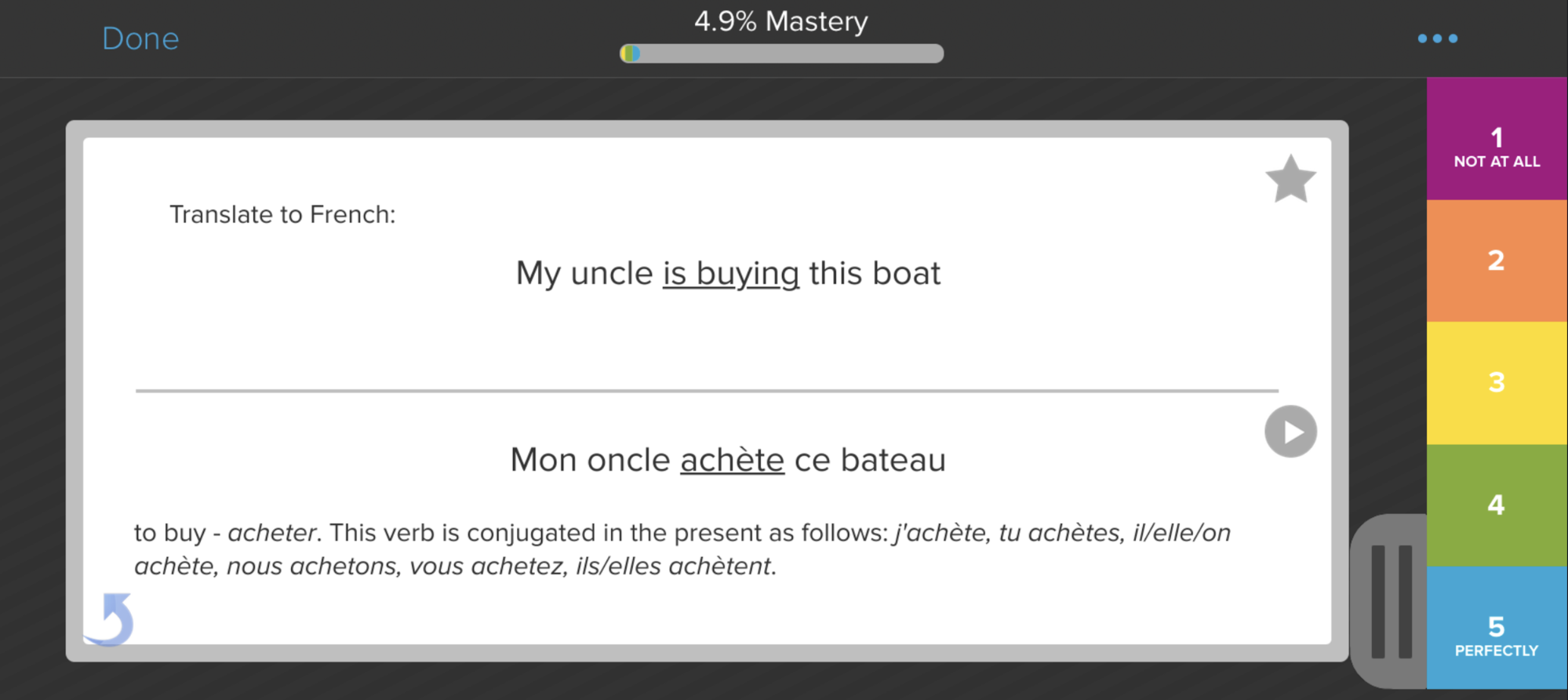What is the “right” way to teach grammar in a second language?
The debate between implicit grammar instruction and explicit grammar instruction has been raging on in the academic world for almost a century now.
Many language teachers have argued both that grammar should be taught in a concealed, integrative manner and in an overt, separate manner. Others are so against teaching grammar that they suggest that students simply “figure out” the rules rather than explicitly learning them.
There's conflicting evidence out there that shows that both methods have their respective logics. So how can we tell which is best for our own purposes?
Well today is your lucky day. Having developed the world's most scientifically proven foreign language spaced repetition system, Brainscape has consolidated the major pros and cons of this type of explicit grammar instruction to determine whether it is effective or not.
To teach grammar or not to teach grammar?

Pros of explicit grammar instruction
- Learning a language's intricacies: Explicit grammar instruction is conducive for “knowing the rules” of a language. In addition, it provides a solid knowledge of grammar and syntax. In other words, this all amounts to mastering how the language works.
- Reveals exceptions: Explicit grammar instruction is useful for pointing out the particularities of a language, the exceptions. For example, overtly discussing word order and irregular verbs in the English language results in a greater awareness of the intricacies of the language.
- Better for some, but not all: It seems to be the case that some people are just better explicit learners. Logical, mathematical and verbal types of intelligence seem to be more readily inclined to learn and adopt grammar explicitly.
- Better for adult learners: Our capacity to acquire new languages declines as we age. As a result, this also means that explicit grammar instruction becomes more relevant as we get older as well. “Formal” language learning seems to be a better approach for adult learners.
Cons of explicit grammar instruction
- Acquiring a language: Implicit grammar instruction is better for “picking up a language” or arriving at a practical use of a foreign language. Implicit instruction therefore helps the learner prepare for natural, communicative situations where rules are often forgotten or broken.
- Achieving fluency: Implicit grammar instruction is actually the way we acquire our very first language at an early age. When we are little we do not pay attention to the rules behind language but rather how it works in practical, real situations. Implicit instruction therefore promotes the gaining of basic linguistic skills that are essential to language.
- Promoting actual memorization: Probably the greatest threat of explicit grammar instruction is the danger of empty memorization. By promoting the “knowing of rules,” explicit instruction also encourages a superficial acquisition of the language. Without knowing how to apply them, rules are pretty much useless.
There's definitely an advantage to using implicit vocabulary instruction. For example, it's best if students can see how foreign vocab is used in real-life context through implicit teaching methods like reading books in a foreign language.
However, the existing theories of implicit vocabulary learning (which also applies to grammar) don't really account for the fact that adult language learners are better able than children to use actual cognition and learn deliberately through explicit translations and explanations.
Try an inclusive approach instead ... like Brainscape
Research does find that explicit grammar instruction is effective. But following Prof. Larry Lynch’s advice, the very best method is probably an inclusive approach to grammar instruction which includes both implicit and explicit characteristics. Brainscape's web and mobile flashcard app for foreign language learning is a great example of using both implicit and explicit grammar instructions.

After years of research working with language learning experts, we developed a ground-breaking language-learning technique called Intelligent Cumulative Exposure. The technique introduces one new grammatical concept implicitly by incorporating (and showing) it in a full sentence first (the rest of the sentence is constructed with vocab or grammar the learner already knows).
The concept is then tested with active recall, where the user has to think about the answer “from scratch". If the user gets it wrong, the technique CORRECTS it explicitly with a bite-sized explanation in the user's native language.

This is the most scientifically optimized way to learn a language. We've developed our innovative new Learn French and Learn Spanish adaptive flashcard collections using this system (with other languages coming soon). Check them out!
It seems that explicit grammar instruction has both its advantages and disadvantages and is not void of fault. The reality is that, rather than one being preferable to the other, it's probably the case that each one is most appropriate in specific scenarios and with different individuals. The best form of grammar instruction is conditional upon the particular learning situation.
You simply have to decide on a balance that is right for you and/or your students.
Good luck!
References
ACTFL. (2024). Teach grammar as a concept in context. American Council on the Teaching of Foreign Languages. https://www.actfl.org/educator-resources/guiding-principles-for-language-learning/teach-grammar-as-a-concept-in-context
Goo, J., Granena, G., Yilmaz, Y., & Novella, M. (2015). Implicit and explicit instruction in L2 learning. In Studies in bilingualism (pp. 443–482). https://doi.org/10.1075/sibil.48.18goo
Lynch, L. (2024, June 19). Grammar teaching: implicit or explicit? | Eslbase.com. Eslbase. https://www.eslbase.com/teaching/grammar-teaching-implicit-explicit
Nazari, N. (2013). The effect of implicit and explicit grammar instruction on learners’ achievements in receptive and productive modes. Procedia - Social and Behavioral Sciences, 70, 156–162. https://doi.org/10.1016/j.sbspro.2013.01.051
Pawlak, M. (2021). Teaching foreign language grammar: New solutions, old problems. Foreign Language Annals, 54(4), 881–896. https://doi.org/10.1111/flan.12563
Tammenga-Helmantel, M., Arends, E., & Canrinus, E. T. (2014). The effectiveness of deductive, inductive, implicit and incidental grammatical instruction in second language classrooms. System, 45, 198–210. https://doi.org/10.1016/j.system.2014.06.003
